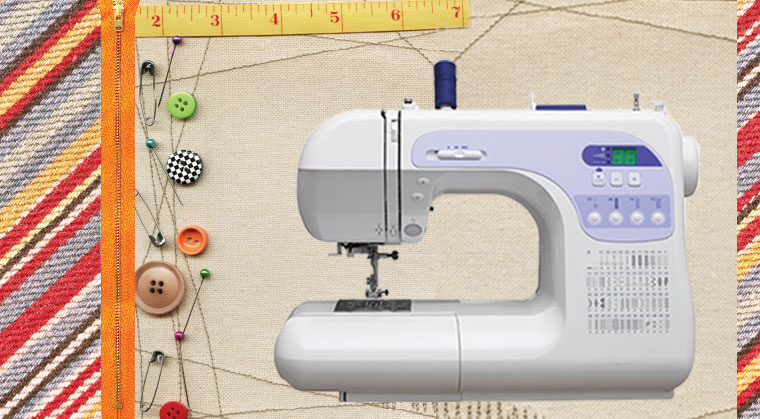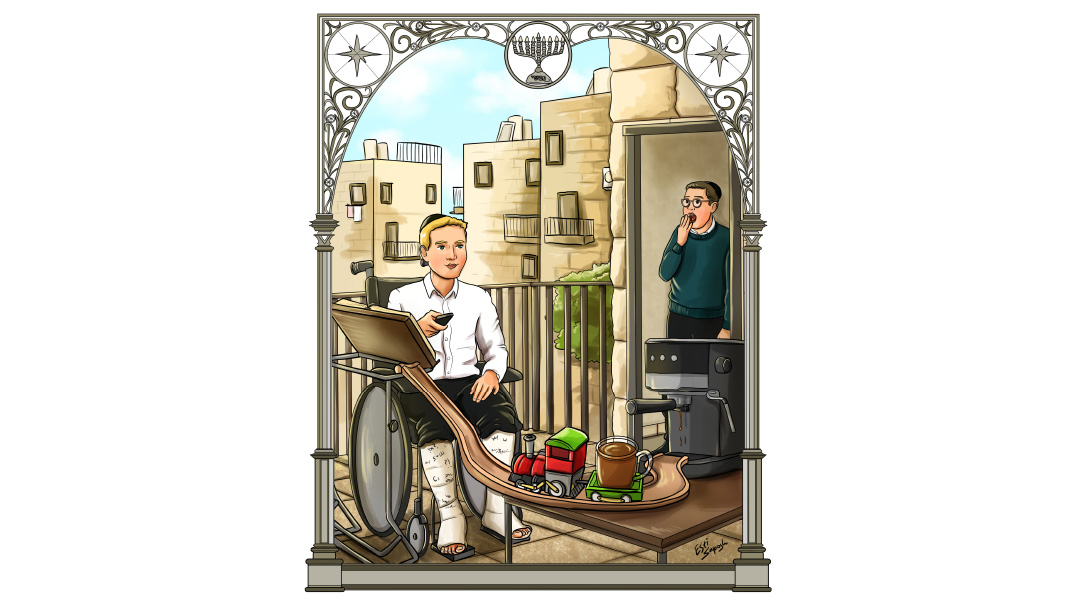Sew Easy with the Right Machine


FEEL FOR IT Though a standard sewing machine isn’t as pricey as a car this is a purchase designed to last for years — and you want to enjoy using it. Most local dealers allow potential customers to try out the machine with fabrics similar to what they’d typically use to give them a feel for the machine
T he day before my nephew’s wedding I still have nothing to wear. Time for a last-ditch shopping spree in the hope that I won’t have to wear my classic black suit after all.
After an hour of dividing dresses outfits tops and skirts into piles of “definitely nots” and “maybes ” I hit upon the perfect ensemble. Well perfect on all accounts but one: the hemline. Adding a trim that coordinates with the organza top would lengthen the hemline and I trust myself to sew a straight seam — but when exactly am I going to get that done? I don’t own a sewing machine and I don’t think I’ll find a seamstress on such short notice.
A combination of blind faith and desperation convince me to purchase both the outfit and the trim and I start the hunt for a friendly neighbor’s sewing machine. But it’s clear to me that it’s time to invest in my own.
An Art Form
Right after the wedding my research begins. I know exactly who to call first: my friend’s sister Roizy Moskowitz. I still marvel at how as a teenager she sewed a slew of velvet gowns for her sisters for a family wedding. Today she offers expert alteration services and sewing courses to teenagers and women.
“Sewing is not just a chore. It’s an art form that allows you to feel an amazing sense of accomplishment” Roizy describes. “No one should think that they can’t master it; everyone can learn to sew. You’re never too old or two young!”
From age two Roizy’s children experiment with plastic needles threaded with yarn and pieces of colorful felt for “sewing just like Mommy.” By three or four they’re ready for blunt metal needles and canvas “Gobelins” gradually moving on to sewing on buttons as they get older. I think about the fact that Roizy has mostly boys — apparently gender isn’t a barrier.
Roizy is happy to share her wisdom opening my eyes beyond the buttons hemlines and occasional torn seams that define “sewing” in my book. Her students create masterpieces from Shabbos outfits gowns and children’s clothing to bed linens curtains and tablecloths.
Roizy’s worked with machines by Singer Brother and Janome which range from $80 to $300. These are the brands she suggests for beginner sewers and those who only use machines for alterations. I’m pleasantly surprised to learn how affordable they can be — I’d always thought a sewing machine was a “big ticket” item.
“Before purchasing a sewing machine you need to know why you’re buying one” Roizy continues the tutorial. “Once you know what you want in a machine you’ll know what to look for.”
Fancy features can be tempting but they’re often overwhelming for those who are just learning the basics of sewing. It’s more important to have a good handle on the machine says Roizy so you know what it’s doing and how to control it. For her courses Roizy supplies lower-end but fully functional Brother machines with minimal special options.
She’s also purchased several Janome machines for students who asked her to pick the ones they’d buy for their home use. These no-frills machines are strong and solid with good stitches. Some students opt for Baby Lock machines which while similar in function to Janome have a recognized 70-year-old American brand name.
For her own sewing Roizy uses a commercial Brother with a powerful motor that supplies quick smooth motion and an array of options for different stitches fabrics and design. These machines start at around $400 and can go up to several thousand dollars.
Simple or Spectacular?
Which features should users look for — or avoid? That depends on personal preference Roizy explains giving the example of the drop-in bobbins on many machines. While some like to be able to see when the bobbin thread is nearly finished through a clear cover she prefers the security of a bobbin case.
There are also those horizontal spool pins meant to hold the threads which fasten into place with a small cap. Some of her students lost the spool pin caps and couldn’t use their machines until the missing pieces were found or replaced.
That’s exactly the kind of frustration I’d like to avoid. No horizontal spools for me!
Another important decision is whether to choose a mechanical versus computerized model. “When something goes wrong it’s easier to find the problem in a mechanical machine” Roizy says. “If the computerized machine goes wrong the whole machine is worthless until the computer problem is fixed. And that’s a lot more complicated than a mechanical problem.”
Since I haven’t fully mastered Microsoft Word I don’t think I’ll be seeing a computerized machine in my home anytime soon.
That’s not to say that computerized machines aren’t more fun. They give seasoned sewers plenty of options for stitches and creative designs. But you really have to be a dedicated seamstress and learn your machine well if you want to enjoy a computerized machine.

“Research research research — as much as you can. And before buying make sure your machine will be backed and serviced by your salesperson in case something goes wrong.”
Actually knowing how to work your machine well is a requisite for all machines. When someone complains to Roizy that her machine isn’t working right she says: “Machines are made to work; you have to know what you’re doing.”
Different fabrics need different size needles varying stitch size press feet. If you don’t set it up right chances are it won’t work right.
The Value of Quality — and Buying Local
Roizy’s advice has been invaluable — I feel ready to hit the sewing machine stores.
Turns out finding a sewing machine dealer isn’t as simple as I’d thought it would be. One fabric and sewing retailer in Lakewood tells me that he no longer carries sewing machines because everyone’s buying them online or at discount stores such as Costco and Walmart. I’m not confident enough to purchase a machine without the step-by-step guidance and assurance of a retailer; I need a real live knowledgeable person to walk me through this.
Luckily I’m referred to Mr. Nadel of Williamsburg’s Vacuum and Sewing Machines (DBA MH Vac and Sew). He sells and services sewing machines in the New York Tristate area and Lakewood. The first thing he warns me about — not surprising for someone in the business for approximately 35 years — is quality.
“People come in with machines they bought at Walmart” Mr. Nadel says “and they want me to fix them. But these machines only have one lifetime; there’s not much I can do for them.”
Another point he makes is that an authorized dealer will teach you how to use the machine service it and supply extra parts or accessories as needed. That isn’t something you’ll get at Walmart.
Oops! We could not locate your form.







